lecture 25: learning and memory 1
1/22
There's no tags or description
Looks like no tags are added yet.
Name | Mastery | Learn | Test | Matching | Spaced |
|---|
No study sessions yet.
23 Terms
types of memories
skills, episodes, semantic knowledge/facts
memory storage is distributed
karl lashley lesioned parts of the cortex and measured the impact on memory in mice
found that a lesion in a single part of the cortex didn’t completely abolish memory, but the more tissue that he lesioned, the more memory was impaired
conclusion: memories aren’t localized to one part of the cortex, but dist throughout; mechanism where these regions work together to support storage + formation of memory

declarative memory
things you know that you can tell others (explicit)
episodic (remembering 1st day of school) - hippocampus
semantic (facts) - cortex
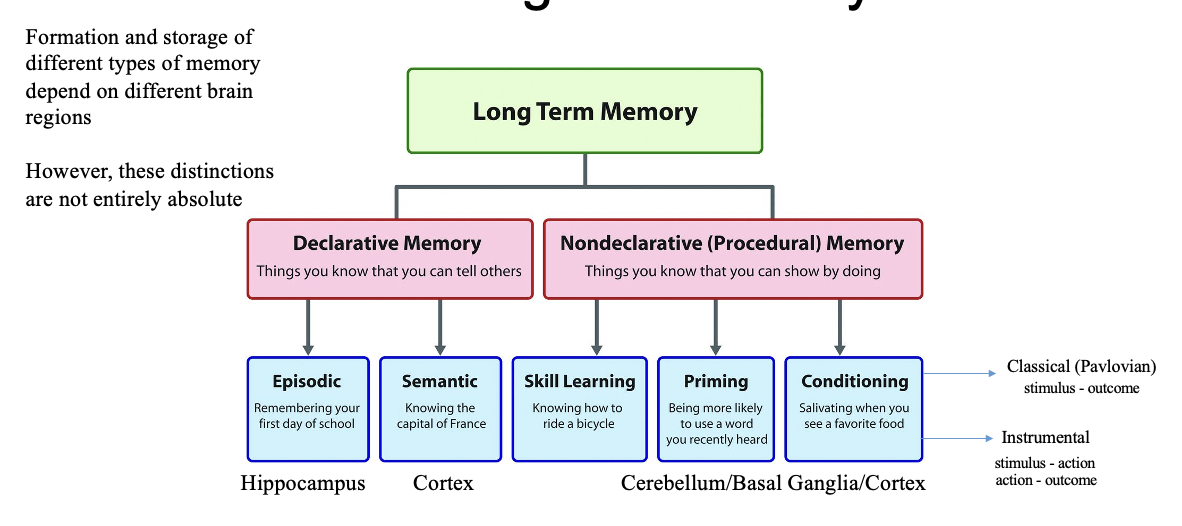
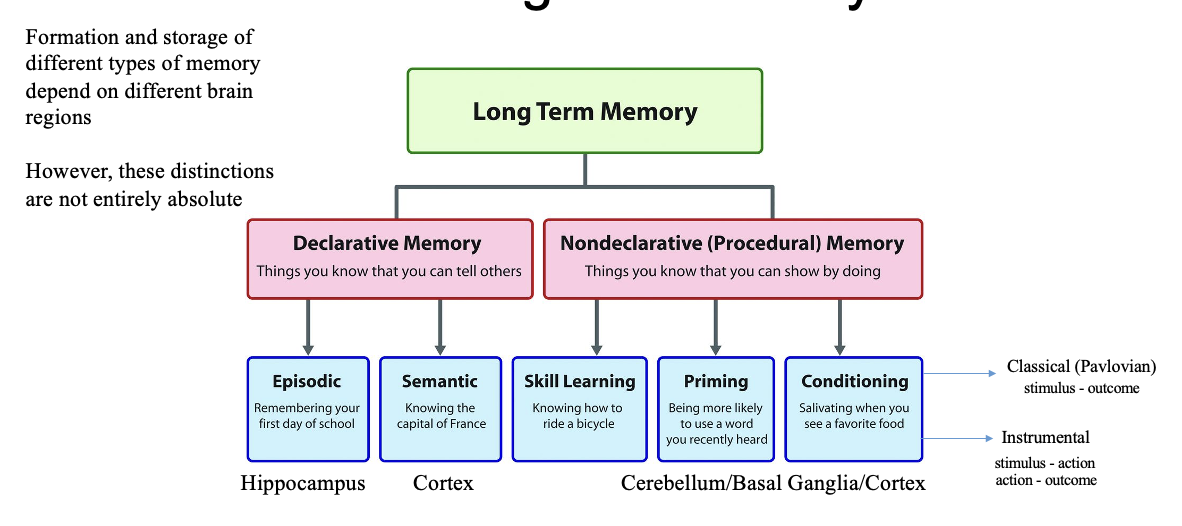
nondeclarative (procedural) memory
things you know that you can show by doing (implicit)
skill learning
priming (being more likely to use a word you recently heard)
conditioning - classical vs pavlovian
cerebellum/BG/cortex
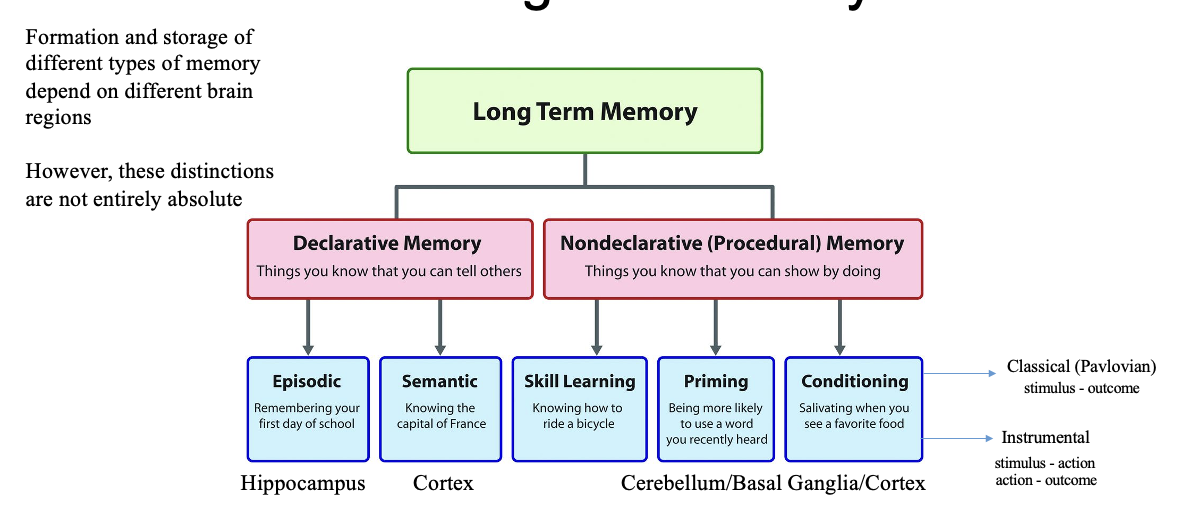
classical conditioning
associating a stimulus with an outcome
starbucks = coffee
skunk = smell of a skunk
instrumental conditioning (learning)
associating a particular action with an outcome, OR a stimulus with an action associated with an outcome
crying kids = no candy
say please = candy!
semantic memory
facts!
associating the word CAKE with the perceptual features of a cake
cortex!
episodic memory
hippocampus
remembering a sequence of events that happened to you
ex: open presents, playing games, eating cake; IN ORDER!
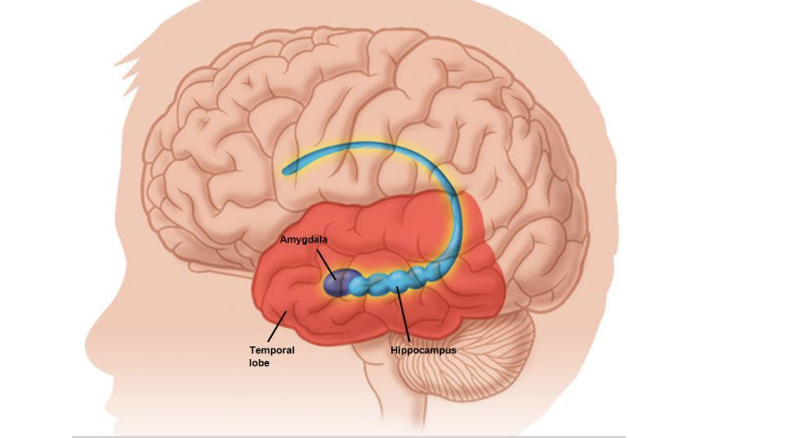
hippocampus
deep brain structure
located close to the temporal lobe, has a horseshoe shape
next to the amygdala (emotions), mems + emotions closely linked
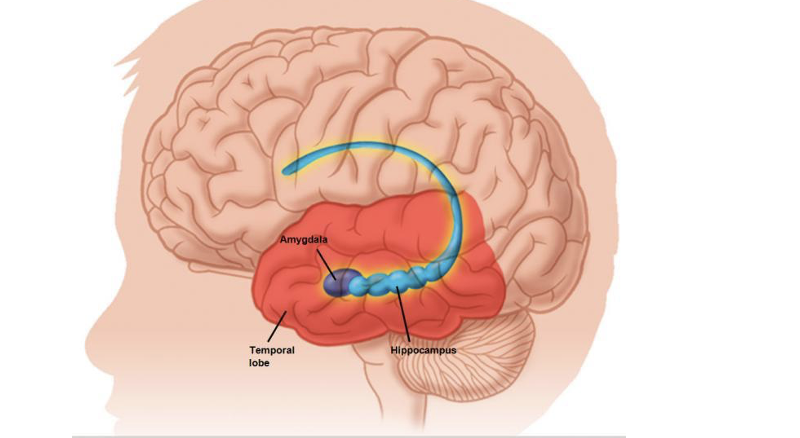
famous case of HM
lesion localized to the hippocampus + parts of the medial temporal lobe
suffered from terrible epileptic seizures, went through surgery to alleviate them where large parts of MTL and hippocampus were removed
after, seizures stopped, but HM could no longer form new long-term memories (anterograde amnesia)
little “retrograde amnesia”: memories from before the surgery were largely intact
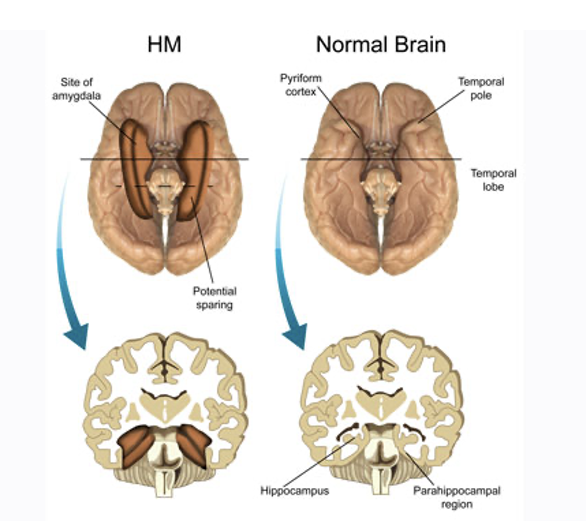
lesion to HM’s brain
provided some of the first evidence that the hippocampus and MTL was critical for episodic memory consolidation, but not for all memory storage
procedural (skill + associative) learning was still intact. HM could learn new skills and action strategies implicitly/subconsciously
illustrated that deficits didn’t include the formation of new procedural memories
deficit didn’t apply to ALL new memories; he would have to do tasks, didn’t remember these, but would get better at them each day
evidence that there are multiple memory systems in the brain
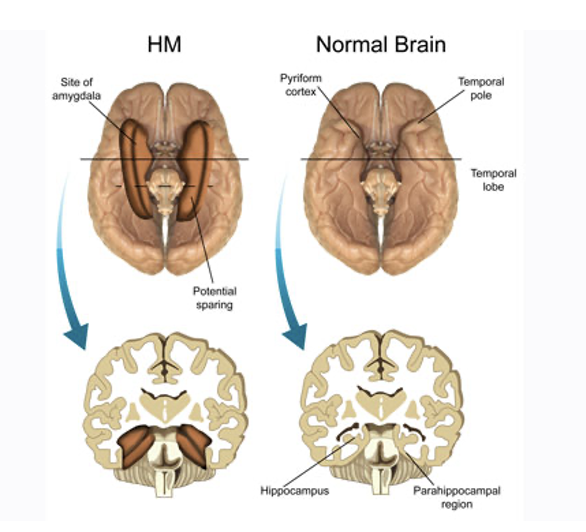
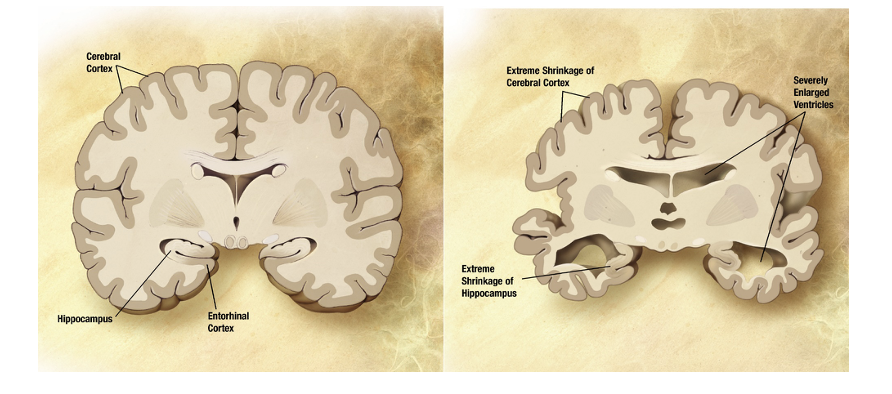
alzheimer’s disease
degrades the ability to form and retain recent long-term memories
involves the degeneration of cells in the hippocampus, and pathology spreads to MTL & affects cortex
initial pathology is localized in the hippocampus, which is why primary deficit is the inability to form long-term memory
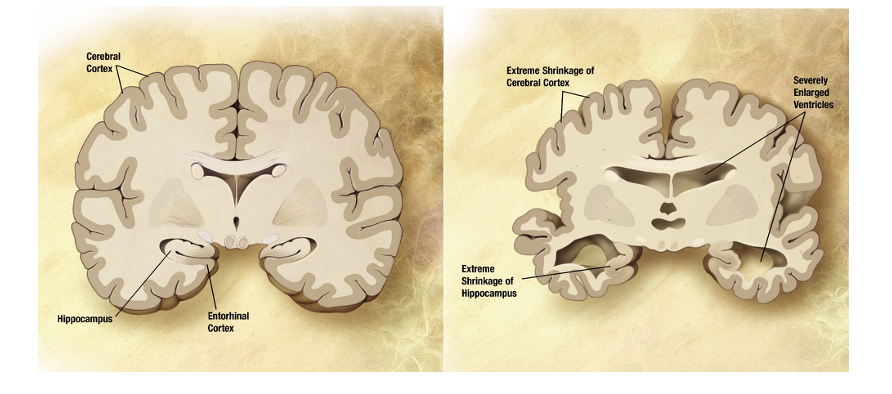
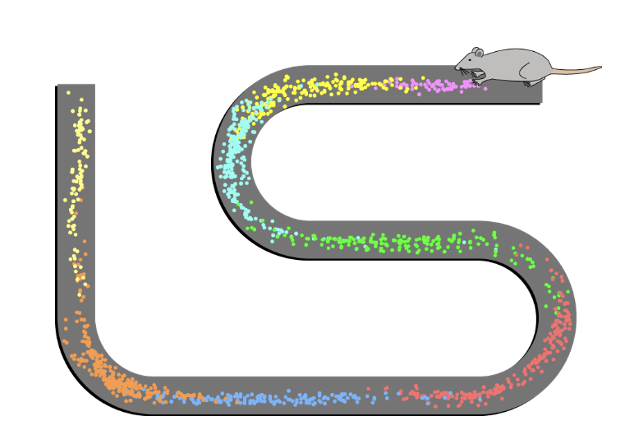
place cells in the hippocampus
john o’keefe stuck electrodes in the hippocampus of rodents and recorded APs of those neurons
each dot is AP of a single neuron, different colors indicate diff neurons
found that as the animal ran down the maze, there were different cells that liked to be active at each location that the animal experienced
collectively, place cells in the hippocampus represent a “cognitive map” of the environment
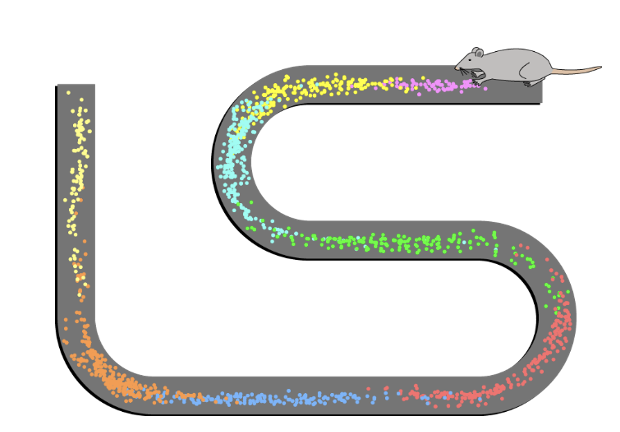
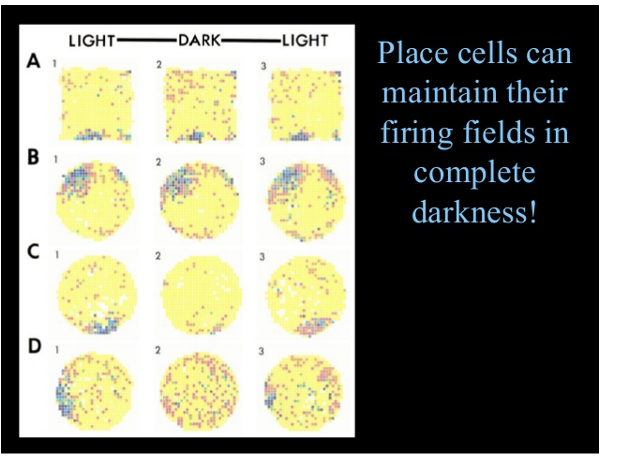
properties of place cells
color indicates amount of firing; each pixel is a location in space; each row is a single neuron
place cells can maintain firing fields in complete darkness!
place cells are not just representing visual space, but location within a context
ex: have place cells firing at each location as you move through a room → map in your brain of everywhere you’ve been
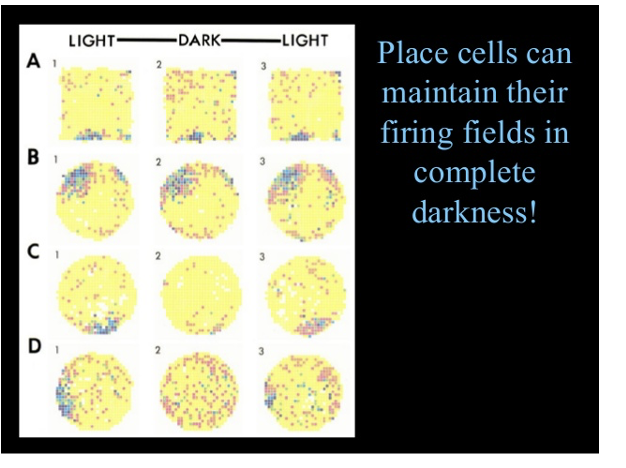

place cells change their firing in different environments
what does it take to get place cells to change their firing?
scale change: changes the scale of representation; cells will fire at the same locations relative to each other, but the scale will change
small change/rate remapping: change color of the box, cause cells to fire in same location, but at diff rates
large change/global remapping: completely swap out all features of the box, put it in a diff room w/ diff sensory cues; position that the neurons fire in completely change
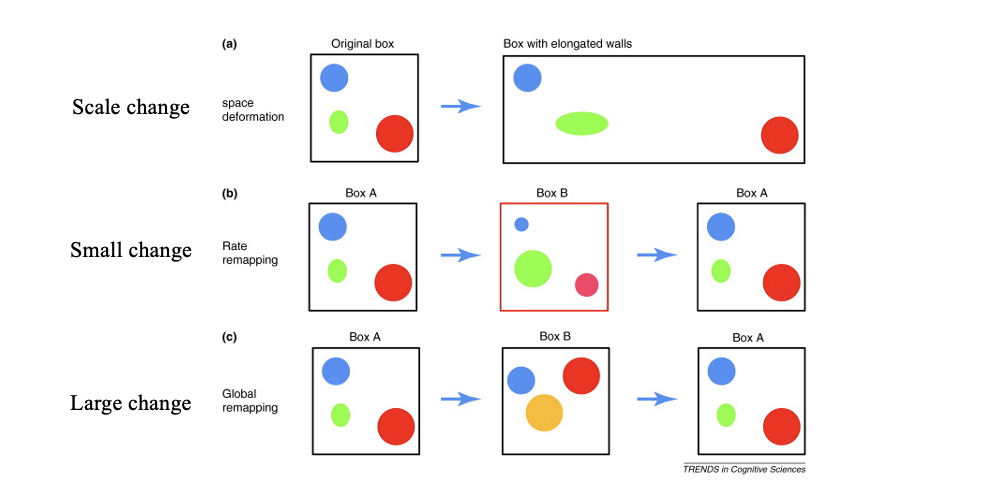
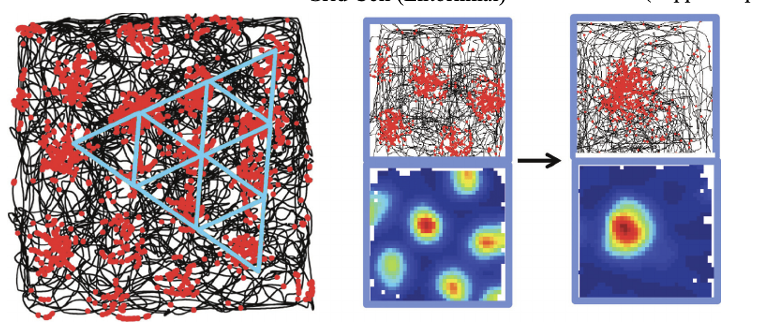
grid cells
located in entorhinal cortex, connected to hippocampus
these cells fire regularly in locations that are spaced at particular intervals
firing forms the vertices of a grid
grid cell inputs to hippocampus may be involved in forming place cells
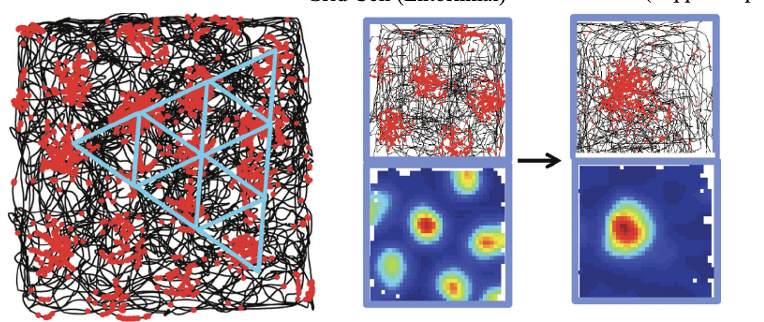
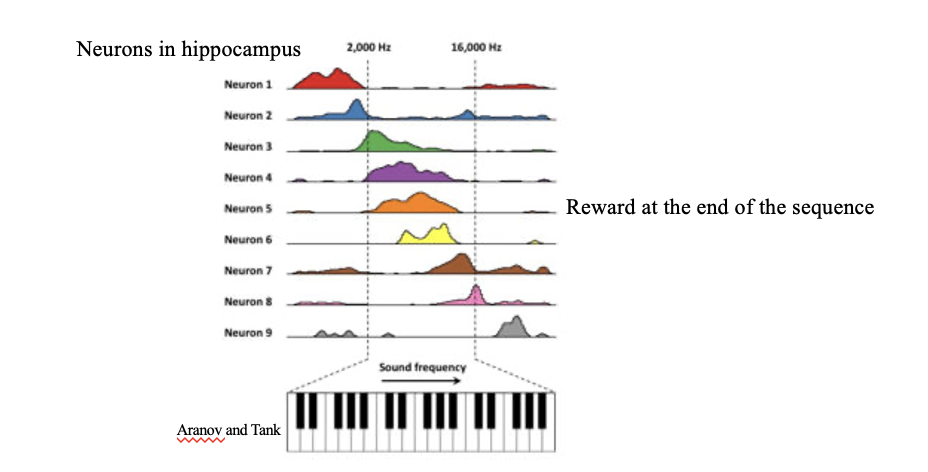
associative properties of the hippocampus
recorded neurons in the hippocampus of an animal who was receiving tones played at diff frequencies in a certain order
this order would indicate how close an animal was to getting a reward
they saw that cells in the hippocampus that fired for particular frequencies in that sequence; those cells tiled the entire sequence of tones from the start to end
each neuron responded to a different sound frequency
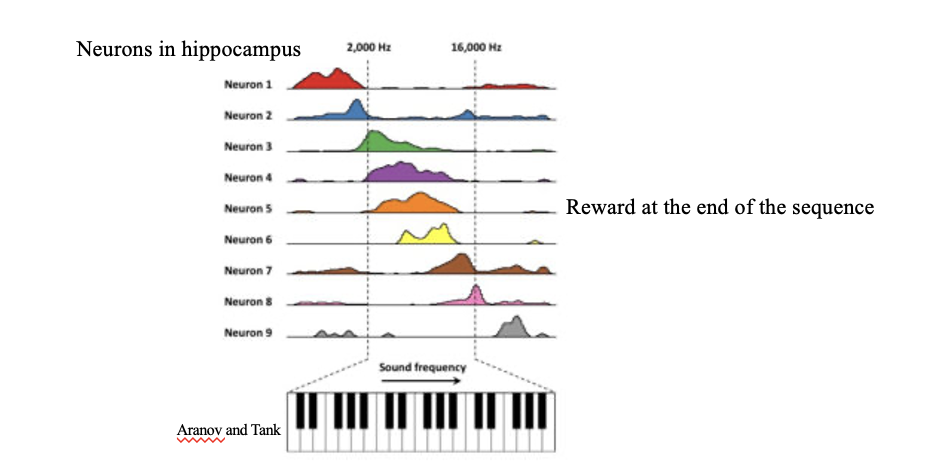
hypothesis of the hippocampus in episodic memory
hippocampus and MTL are involved in making “associative maps,” allowing you to perceive and process sequential events
sequential activation of different components of those maps can constitute an episodic experience
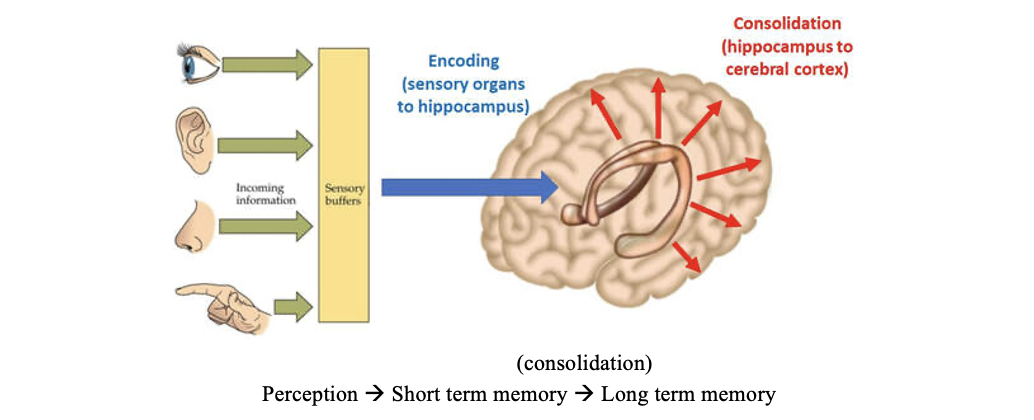
hippocampus contribution to episodic memory formation
receives info from sensory environment, reformats it in a way that allows these sequences to be expressed (encoding from sensory organs to hippocampus)
sends outputs which allow it to broadcast its message (consolidation from hippocampus to cerebral cortex); turning experience into a memory!
hippocampus plays a role in “consolidating” episodic events into long term memory
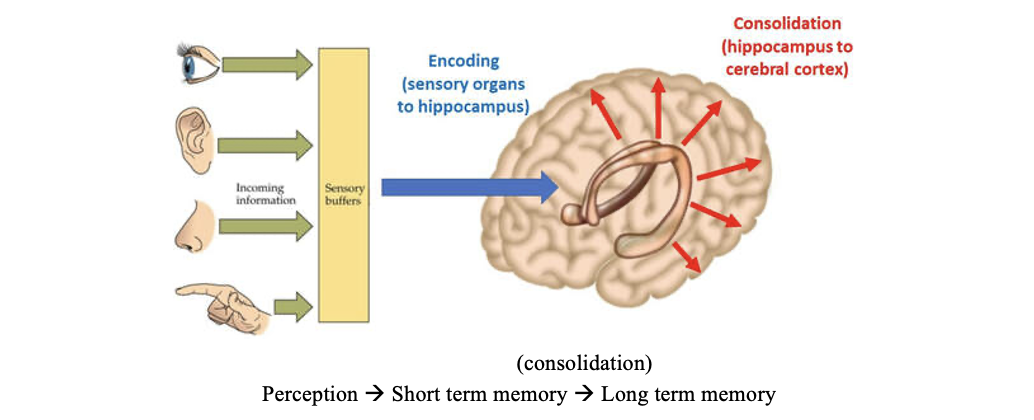
memory consolidation
when an animal runs down the track, place cells will fire in their particular order
when they get to the end + get reward, those same cells that were active replay in the animal’s brain in the reverse order
replay happens way faster than when it’s going down the path
reverse replay event is the broadcast signal! aka what the hippocampus is telling the other brain regions what it just experienced/episode and to remember it
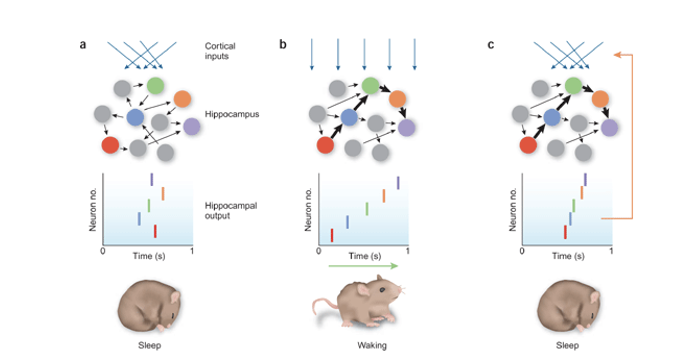
reverse replay occurs during sleep
when animals fall asleep, there are replay events happening during certain phases of sleep
they occur in the same order when the animal was doing the behavior
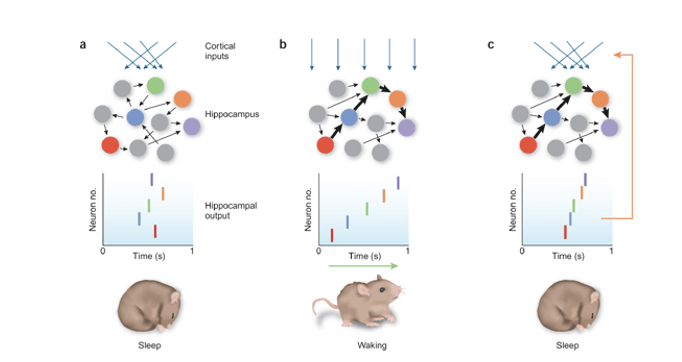
PTSD
persistent activation of certain traumatic memories
remembering things you don’t want to remember
manipulating specific memories
how to mess with these circuits in the hippocampus that allows you to alter traumatic memories
using genetic techniques to target neurons that are activated during the encoding/retrieval phases of memory
goal is to erase pathological memories and/or “implanting” new memories